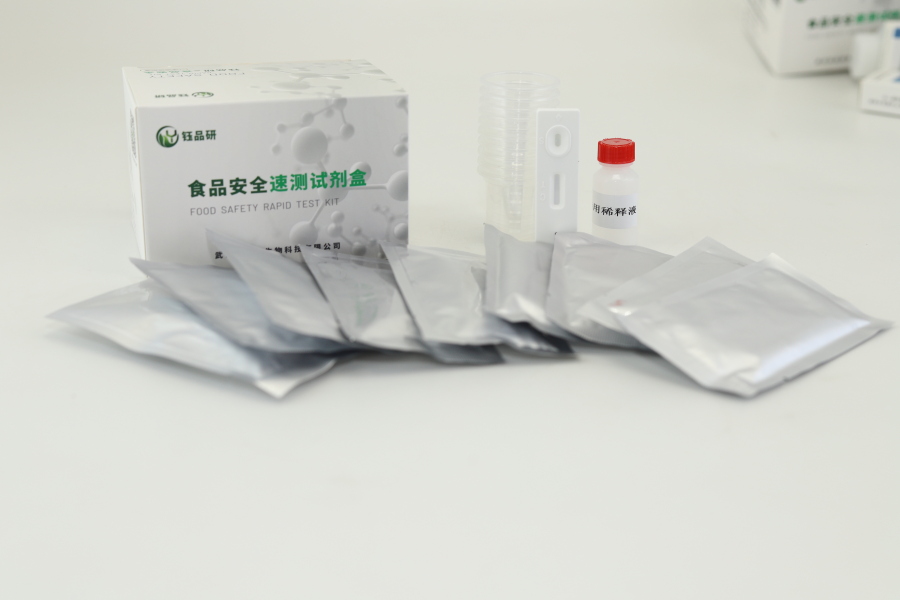The Ofloxacin Colloidal Gold Rapid Detection Card is a rapid diagnostic product specially designed for food safety detection. It is mainly used for quantitative or semi-quantitative detection of the residue of Ofloxacin-like veterinary drugs in animal-derived foods (such as pork, chicken, milk, aquatic products, etc.). It is based on the principle of colloidal gold immunochromatography technology, which binds Ofloxacin monoclonal antibody to colloidal gold particles, and realizes rapid identification of the target substance in the sample through antigen-antibody specific reaction.
From a structural point of view, the detection card usually consists of sample pad, binding pad, nitrocellulose membrane (NC membrane), absorbent pad and PVC baseplate. Among them, the NC membrane is fixed with a detection line (coated with ofloxacin-OVA conjugate) and a quality control line (coated with sheep anti-mouse IgG antibody). During testing, the treated sample (such as tissue homogenate, liquid sample, etc.) is added dropwise to the addition well, and the sample will flow through the binding pad, NC membrane, and absorbent pad in turn. If the sample contains ofloxacin, it will compete with the colloidal gold-labeled antibody on the binding pad to bind the antigen on the detection line on the NC membrane, causing the color development of the detection line to become lighter or disappear; otherwise, the detection line remains clear. The quality control line is used to verify whether the detection process is going on normally, as long as the quality control line is colored, the result is valid.
As a rapid detection technology, the ofloxacin colloidal gold rapid detection card has significant advantages: the detection time is short, usually 10-15 minutes to produce results; the operation is simple, no professional equipment and complex pretreatment are required, and non-professionals can use it after simple training; high sensitivity, can reach ng/mL level; relatively low cost, suitable for large-scale screening. In practical applications, it is widely used in veterinary drug residue monitoring in the breeding process, rapid sampling of market circulation products, and quality control in the production process of enterprises, providing efficient technical support for ensuring food safety and preventing the use of illegal veterinary drugs.


